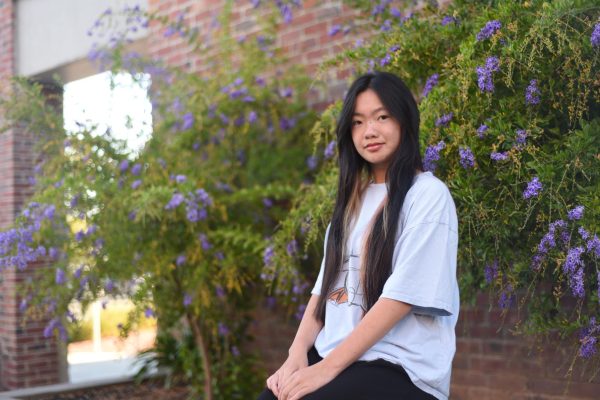Scrolling down the online gallery of the Scholastic Art and Writing competition is something Rishi Janakiraman, a sophomore attending Stanford Online High School, often does to gain inspiration for his own writing. Over the years, he’s noticed how culture and racial identity is a recurring theme among Black, Indigenous and people of color (BIPOC) writers, including himself.
“It’s fun to write about your culture because it’s accessible,” Janakiraman said. “As an Asian American writer, it’s often something we can really easily reach. Writing a poem about something so distant and abstract as nature is kind of hard for me, so when I say I write a cultural poem, I’m just trying to reach toward something that’s already close to me.”

Similarly, as a BIPOC writer, junior Shannon Yu also values the inclusion of culture and heritage in written media. She enjoys reading and writing about characters she can relate to, ones who can serve as her foil and characters who inspire her, which often results in frustration when she sees characters being portrayed solely through racial stereotypes.
“I really dislike it when they do have an Asian character who’s poorly written and is a horrible representation of the Asian race and a horrible representation of what people can be,” Yu said. “I realized I write racially non-specific characters, and I feel that helps me as an author to connect with my readers. I want any reader who picks up my book to know that they are included in my definition of this human being.”
MVHS English teacher Shozo Shimazaki says Gene Luen Yang’s “American Born Chinese” is his favorite unit to teach in American Literature because of its message of inclusivity. He’s seen that students appreciate being able to relate to the book — he, too, personally connects with it as a second generation Japanese American who rejected Japanese food to conform to mainstream society when he was younger. However, he also acknowledges that there can be unintended consequences in how such literature, often categorized as Minority Literature, is perceived.
“There’s always going to be this issue of a writer wanting to be acknowledged for their genius overall,” Shimazaki said. “There’s always going to be a spectrum where, are you teaching that just because it’s a reflection of a particular minority group, or are you teaching that for its universal value or as a piece of literature overall? And as an author, how do you want to be known?”
Janakiraman adds that although distinguishing literary works by BIPOC authors most likely doesn’t come from a place of malice, it can still limit BIPOC authors’ careers. As a reader, he admires many authors who write about culture and is inspired by their empowering words. However, in his experience from submitting to writing competitions, he points out that most judges who read works by BIPOC writers are white, so while their intentions may be to uplift diverse voices, he believes there are shortcomings in how they evaluate BIPOC narratives.

“The problem is I love to write about my culture,” Janakiraman said. “Culture is something that’s beautiful. It’s an endless space for metaphors and an endless space for poetry. But are we really seeing originality here, or are young writers just following the footsteps of their predecessors? Are young writers really trying to expand their voice, or are they trying to fit themselves into what they think wins a competition?”
Janakiraman has often seen BIPOC poets incorporate foreign words and cultural references to food, practices and customs into their work. While he appreciates that young BIPOC writers have role models from a diverse range of cultures, he says they may still feel pressured to retell stories with similar themes.
“There comes a point where culture itself becomes stifling for the sake of performing for a judge or an editor,” Janakiraman said. “I’ve been pressured in the past, and I am pressured now to constrain the topics I write about. I feel as though if I write about the environment or write a poem about my friends, it will decrease my chances of getting honored.”
Yu also acknowledges the rise in BIPOC writers striving to represent people of color in their work may feel overwhelming for certain people as society’s push for representation grows in both numbers and intensity. However, she believes that BIPOC writers being told to “tone it down” should not be the way to go, as there is still an ongoing problem with people of color being underrepresented in the media.
“Especially with the coming out of “Crazy Rich Asians” and “Everything, Everywhere, All at Once,” I have realized that I’m very proud to be Asian,” Yu said. “I think it’s a good thing to have at least a few pieces of media where you can really see your culture and really spread the word that hey, this culture exists, and we’re here to stay.”











